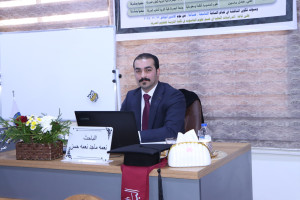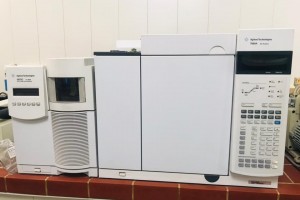
Zaid Nour Obaid from the Babil tribe, Prof. Dr. Jassim Mohammed Saleh from the Department of Chemistry, and Prof. Dr. Ali Abdel Latif Abdel Hassan from the Department of Life Sciences, obtained a patent for the preparation of the tetrahedral nickel (II) complex derived diamine ginyl and the possibility of using it to treat esophageal cancer (SK). -GT-4) and hepatocellular carcinoma (HCAM)
The patent includes the preparation of a previously unprepared nickel (II) complex with the ligand (1E,1'E)-N,N'-(1,2-phenylene) bis(1-(thiophen-2-yl)methanimine). The metal complex was prepared in Its solid state in a molar ratio of (1:1) by dissolving the weights of each metal salt in (10ml) of absolute ethanol to the ligand solution (0.2964g) dissolved in (30ml) of the same solvent, after completing the mixing process and then performing the sublimation process for a period of ( 2hrs) at a temperature of (80°C). It is considered a potential treatment for esophageal cancer (SK-GT-4) and liver cancer (HCAM). The newly prepared invention in our laboratory has proven its effectiveness and pharmacological effect through studying biological and toxicological tests on human cells infected with esophageal cancer (SK). -GT-4) and liver cancer (HCAM) and another healthy one (HBL100) for the purpose of comparison. It was noted that the nickel (II) complex has a high effectiveness in inhibiting esophageal cancer cells in humans with a good selective rate when treating tumors of this type of cancer, which encourages its use as a substance. It is a candidate for treating this type of cancer. The highest percentage of inhibition of the nickel (II) complex was for esophageal cancer cells at a concentration of 750 µg/ml, which was 92.02%, with an IC50 value of 319.2 µg/ml, and for liver cancer cells at a concentration of 750 µg/ml, which was 94.79%. With an IC50 value equal to 136.2 µg/ml.








